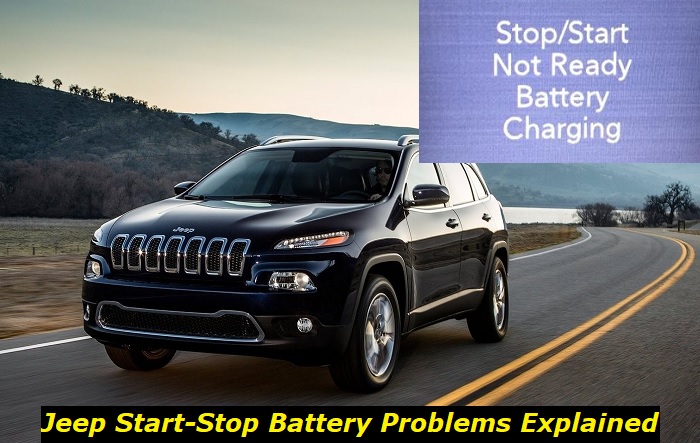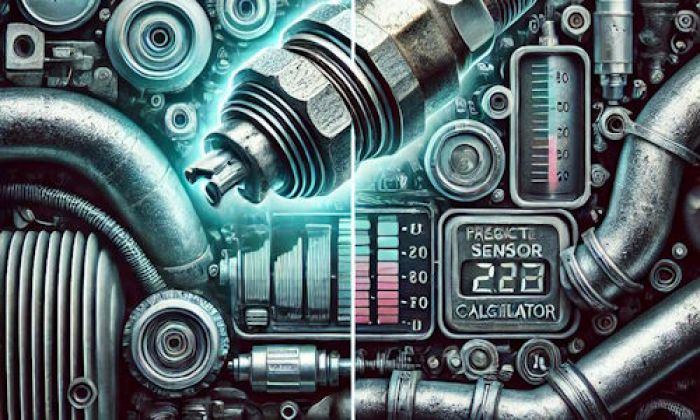The Start-stop system, also known as ESS, is a cool feature. It is supposed to reduce emissions and fuel consumption. But it is not without problems.
Auxiliary battery highlights
- Purpose:start-stop, auxiliary power source
- Average lifespan:3-4 years
- Types:AGM, EFB
- Location options:behind bumper, in trunk, near main battery
- Reasons for failure:age, drain, loose contacts
- DIY replacement:possible but may be complicated
- Average price:$100-$180

Jeep Start-Stop Battery: Symptoms
The start-stop feature in Jeep and many other car brands is a great way to save on mileage and emissions.
This feature allows the car engine to automatically stop when the driver pushes the brakes to bring the car to a halt and start back up again when the driver releases the brakes to make the car mobile again.
The system also prevents the Jeep from idling when it stops at a red light or is in a drive-thru queue. But things can get pretty annoying when you get messages like "Auto Stop not working."
Symptoms of this problem include the following:
- You find it challenging to start your car because the battery keeps draining
- Your instrument cluster or your dashboard keeps telling you that the auto-stop battery is not charging
- Your dashboard turns on the red light and displays the message "No battery voltage."
However, you want to make a quick diagnosis to ensure the problem is connected to the battery. Check the section below to learn how to diagnose the Jeep start-stop battery problem.
Jeep Start-Stop Diagnosing
If you have problems with your auto start-stop battery, or the car has starting problems because the battery keeps draining, the fastest and surest way to diagnose the problem is to check the battery.
To do this, you need to grab your favorite multimeter to measure the battery's voltage. First, set the multimeter to 12 volts DC, and then grab your test probes and test the battery. You want to test the primary battery first before checking the auxiliary battery.
The red test probe goes to the positive terminal, while the black test probe goes to the negative terminal. Typically, a healthy battery will read somewhere between 12.4 volts to 12.6 volts.
The easiest way to verify that your battery has gone bad is to throw it on a battery charger and wait a few hours. After the battery has been on the charger for a few hours, you can come back out and read the voltage.
If you have a bad cell or your battery is completely bad, you will see that after you turn off the charger, the voltage will quickly drop.
Many auto repair shops, especially battery stores, have a high-end load tester and will test your battery for free. The goal is to check if your battery is no good so that you can know whether to replace the battery.
Replacing your Jeep Start-Stop Battery
Depending on the year model of the Jeep you are using, it is pretty easy to replace the start-stop battery of your Jeep.
But there is some important information you need to pay attention to when working on this.
Since there are two batteries, if you disable one battery, the other one will still be alive, meaning there will still be 12 volts in the system as if you never touched the first battery. So it is extremely important to pay attention to prevent any damage.
If you use a 2015-2020 Jeep Grand Cherokee, you will first access the battery panel under the passenger seat.
To do this, you are going to first slide the passenger seat forward. Moving the passenger seat forward will reveal a panel under the seat.
This panel is where the battery is. You want to pop it open and leave the cover aside. In the box enclosure there, you'll see the Start-Stop battery. You'll notice the negative and positive points on the battery, usually closest to the back seat, while the main battery will be by its side.
You want to check for the part number on the battery. This should read something like "AUX 14," so you can know which one to pick when you pick up a new one.
You can pick up a new battery for around $99 on AutoZone. Always remember to start the disconnection with the negative side. Using a 13mm socket wrench, you want to disconnect the negative side of the battery first. Keep the bolt safe and tuck the connector away.
You should keep the bolts in a container so there will be no reason to spend hours searching for a bolt. A usual occurrence when replacing the start-stop battery or any other repairs that involve the removal of bolts and lug nuts is that they often get misplaced. You want to avoid this.
The next step is to disconnect the negative side of the main battery. You can do this with a 10mm wrench. After unscrewing the bolt, you want to remove the terminal connector, tuck that away and keep the bolt in the container you set aside.
Get your 13mm wrench again and remove the positive side of the auxiliary battery. Again, put the bolt in the container you set aside to keep the bolts. Tuck the connector away or let it lay down by the side.
Next is removing the retaining bolt for the strap that holds the battery in place. You will need a deep impact socket to get that unscrewed.
After removing the retaining bolt, disconnect the vent hose from both ends. After that, you want to lift the retaining clip that holds the battery down and move that out of your way. Reach in to dislodge and remove the battery.
Place your new battery in the same position as the old one you are replacing, with the negative and positive ends in their corresponding positions. Transfer the connector pins from your previous start-stop battery to your new one. But this step may not be necessary if your OEM battery comes with the pins. But that is highly unlikely.
After fixing your new battery, you want to reinstall your vent hose at both ends. Install the retaining clip and keep it fixed with the retaining 10mm bolt you removed earlier. Again, you'll need your deep-impact socket to ensure that the retaining bolt is fixed tight.
Now you can reconnect the positive of your auxiliary battery. After that, reconnect the negative terminal back on the main battery. Reconnect the negative terminal on the auxiliary battery, and you can finally reinstall the panel cover back on the battery compartment.
If your Jeep is one of the many models that have both batteries in the hood, like the Jeep Compass 2018, the process is still the same.
But so you don't have to worry about damaging the Intelligent Battery Sensor when removing the negative terminal connector of the primary battery, it is advised that you first remove the cable from off the battery. You want to take it off and sit it out of the way, so your IBS does not get damaged.
You want to sit it well, so you don't have to worry about it coming to the post when you deal with the positive cable. Apart from this, the process is pretty much the same.
If you use a Jeep Wrangler, do not fret. The secondary battery is right underneath the fuse box that is connected in parallel to your primary battery. You want to carefully remove the fuse box, the secondary battery, and the retaining cover to get to the auxiliary battery.
Do not forget to install the battery insulator back after replacing the new auxiliary battery before screwing on the retaining cover and setting the fuse box back.
Bottom Line
Although a weak battery is a common reason for an inactive start-stop system, there are other reasons. One notorious reason is missing grommets under your hood where the sensors are to pick their signal.
You want to find the missing grommet and replace them. After replacing them, you will need to drive a little distance and halt for the start-stop system to become active again. This is a quick diagnosis and is the first thing a driver should check before suspecting the batteries.
Again, if you change your battery, you must remember that it is not so straightforward. You want to follow the procedure above to avoid damaging any electrical system in your car.
Also, the location of the battery in some Jeep models may differ from others. If your primary and auxiliary batteries are not in the hood, you will find them under the passenger seat.
If your primary battery is under the hood and you can't see the auxiliary battery, you want to check under the connector panel close to your primary battery.
About the authors
The CarAraC research team is composed of seasoned auto mechanics and automotive industry professionals, including individuals with advanced degrees and certifications in their field. Our team members boast prestigious credentials, reflecting their extensive knowledge and skills. These qualifications include: IMI: Institute of the Motor Industry, ASE-Certified Master Automobile Technicians; Coventry University, Graduate of MA in Automotive Journalism; Politecnico di Torino, Italy, MS Automotive Engineering; Ss. Cyril and Methodius University in Skopje, Mechanical University in Skopje; TOC Automotive College; DHA Suffa University, Department of Mechanical Engineering






Add comment